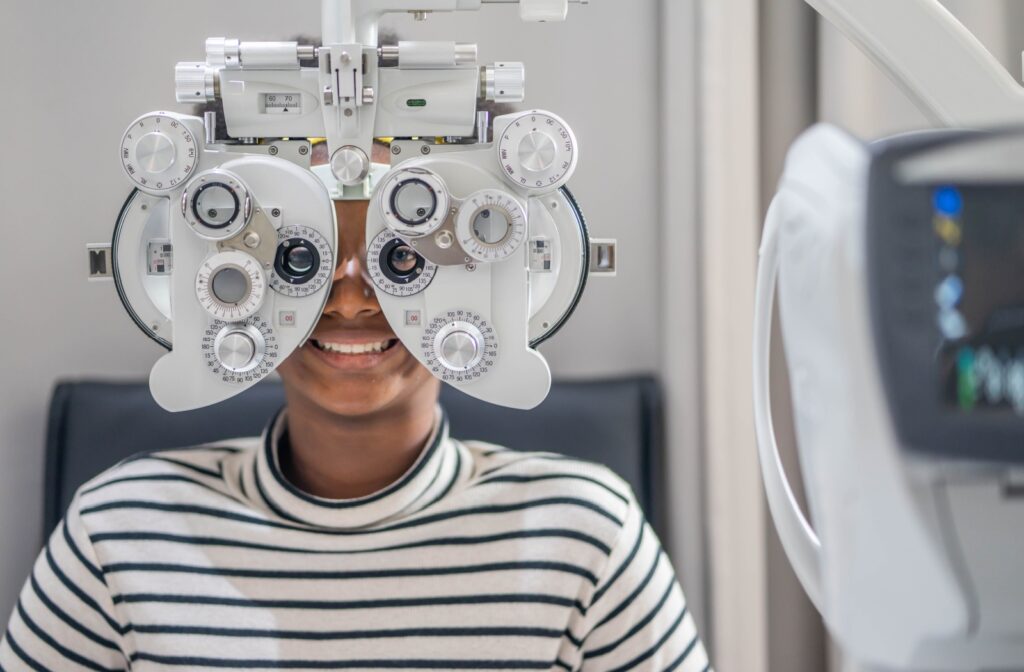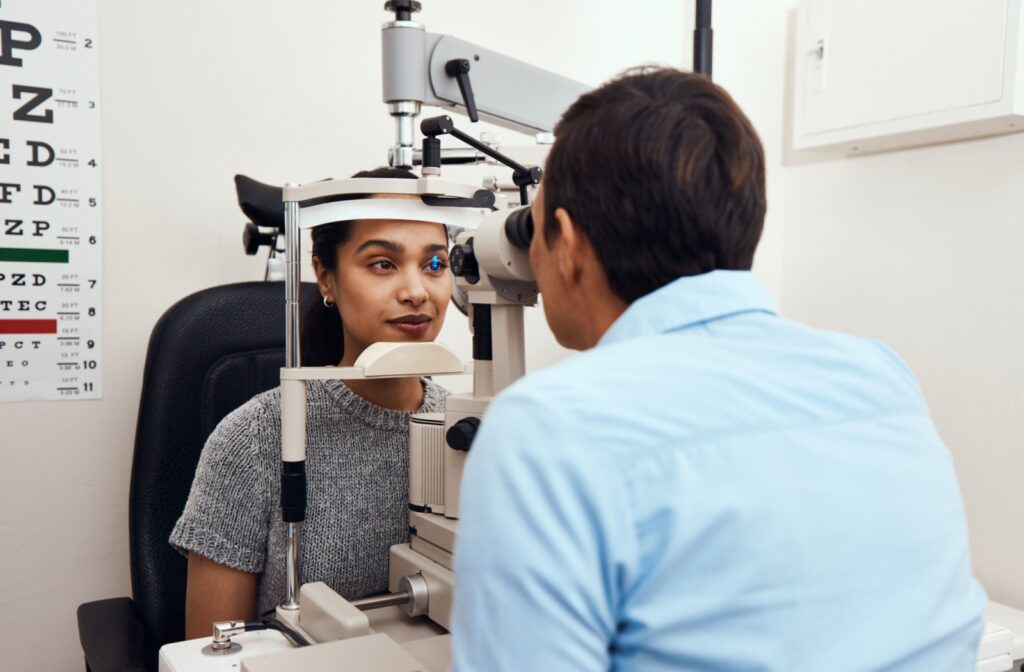Are you due for an eye checkup? Whether you’re looking to update your prescription or to understand your eye health better, knowing what’s included in an eye exam can help you prepare and make better choices for your vision.
A comprehensive eye exam typically includes measuring aspects of your vision, examining the health of your eyes, and discussing vision needs for your unique lifestyle. In general, adults with a low risk of eye health problems should get a comprehensive eye exam at least once every two years. People with certain health conditions or medical histories may require more frequent exams.
Why Eye Exams Are So Important
You use your eyes for just about everything. But many vision issues sneak up without obvious warning signs. Some problems can remain hidden until they threaten your sight or health.
A comprehensive eye exam can provide a full health assessment of your eyes and support your overall well-being. Eye exams can even detect other health conditions like high blood pressure and diabetes.
Eye Exams vs. Vision Screening
You may have experienced a vision screening at school, in a primary care physician’s office, or as part of your driver’s licensing. These tests are not equivalent to a comprehensive eye exam, which can uncover underlying health conditions, evaluate how well your eyes work together, and detect eye diseases early.
Preparing for an Eye Exam
You don’t need to do much to prepare for an eye exam, but the following may help:
- Know you and your family’s health history
- Jot down any questions you may have
- Have a list of your current medications and supplements
- Bring your contact lenses and prescription eyewear
- If your optometrist plans to dilate your eyes, bring sunglasses. You may also need to arrange for a ride home.
How Often You Should Get Your Eyes Checked
Eye exam frequency depends on age, risk factors, and health status. Here are some guidelines from the American Optometric Association:
Young People
These are general guidelines for young people considered low risk for eye diseases, but those considered at a higher risk may require more frequent check-ups.
- Infants and toddlers: Once between 6 and 12 months of age.
- Young children: At least once between 3 and 5 years of age.
- Children and youth: From ages 6 to 17, adolescents should get their eyes checked before first grade and once a year until they turn 18
Adults
Again, people at higher risk, such as those with diabetes or high blood pressure, may require more frequent exams than these general recommendations:
- Adults aged 18 to 64: Once every two years.
- Older adults aged 65 and up: Once a year.

What Happens During an Eye Exam?
According to the American Optometric Association, a typical eye exam may contain (but is not limited to) the following components:
Understanding Patient History, Lifestyle & Vision Needs
You and your optometrist may begin by discussing your current vision or eye concerns, general health history, and daily visual demands (work, hobbies, screen time).
Measuring Visual Acuity
You may read letters on charts at different distances. Visual acuity is expressed as a fraction like “20/20” or “20/40.”
Screening Color Vision, Depth Perception & More
You may undergo preliminary screening to test your color vision, depth perception, and peripheral vision. Your eye muscle movements and pupils’ reaction to light may also be assessed.
Measuring the Cornea
Your eye doctor may measure the curvature of your cornea. These measurements help with contact lens fittings.
Assessing Refractive Errors
Refractive errors include nearsightedness, farsightedness, and astigmatism. This test determines your eyewear prescription. You may be given several lenses to see which produces the clearer image. Eye drops may be used in certain cases.
Testing Eye Movement
Your optometrist will test how well your eyes move, focus, and work in sync.
Eye Health Exam
Here, your optometrist will use special equipment to carefully assess the structures of your eye. They may use eye drops to dilate your pupils or measure intraocular pressure. This is when underlying health conditions and eye diseases may be discovered for the first time.
Other Tests
Additional tests may be required depending on eye exam findings or other personal circumstances.
Comprehensive Eye Exams in San Diego
Vision problems can seriously interfere with everyday life. Eye care services like dry eye therapy, myopia control, and eye disease management can help you return to important activities and see more clearly. If you experience symptoms of an eye emergency, such as sudden vision loss or intense eye pain, contact us at Total Vision Del Mar or visit your nearest emergency room right away.
Regular eye exams are a part of maintaining not just eye health, but general wellness. They can help you catch problems early, relieve visual discomfort, and support your overall well-being. If you haven’t had your eyes checked in a while, consider scheduling an eye exam today at Total Vision Del Mar.



